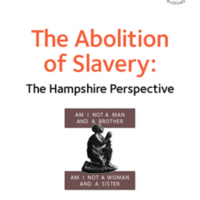
The Abolition of Slavery: The Hampshire Perspective
A touring exhibition exploring Hampshire's links with slave ownership and the abolition campaign was produced by (and featured material from) Hampshire Museums and Archives Service and Hampshire Record Office. The exhibition was on show in the Record Office foyer, before travelling to museums, schools and community centres around the county. The exhibition revealed that there were slave owners living in places in Hampshire such as the village of Hurstbourne Tarrant, and told the story of a slave-trading voyage in 1700 led and financed by men from the Titchfield area. Black servants, very likely former slaves, could be found in unlikely places such as Martyr Worthy and Bramdean. The abolition campaign was fought in the columns of the Hampshire Chronicle and the Hampshire Telegraph, and communities as diverse as Portsmouth, Whitchurch and Fordingbridge sent in petitions to Parliament on the subject. The exhibition also mentioned white slaves taken from the English coast by Barbary pirates, and the testimony of a group of emancipated slaves from Cuba who arrived in Southampton in 1855 on their way to Lucomi in Africa.
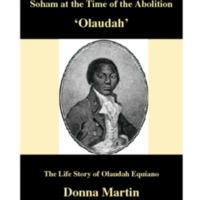
Soham at the Time of the Abolition
Soham Village College partnered with Soham Action 4 Youth (SA4Y) and Soham Museum in a project to record Soham at the Time of the Abolition, to commemorate the bicentenary and celebrate the life of Olaudah Equiano. Equiano, otherwise known as Gustavus Vassa, was the former slave who became an antislavery campaigner in the 18th century. His connection to the Cambridgeshire town of Soham is in his marriage to a local woman, Susannah Cullen, at St Andrew’s Church. Both of his daughters were born and baptised in the town. The research aspect of the project including mapping the town of Soham as it was in the 18th century, the results of which were published in a book by Mac Dowdy. 'Olaudah: The Life Story of Olaudah Equiano' was written by Donna Martin.
Several community events took place during the course of 2007 and 2008, including a re-enactment of Equiano’s wedding at St Andrew's Church in Soham, performed by Soham Village College theatre group Stage Chance, in partnership with Momentum Art’s Untold Stories Arts and Heritage Project. The event also comprised several speakers and performances of African dance and drumming, and the launch of a book by Angelina Osborne about the life of Joanna Vassa, Equiano’s only surviving daughter. A permanent plaque to Olaudah Equiano was unveiled in the church. The project also featured an exhibition of African art and portraits of Equiano by Soham residents and young people.
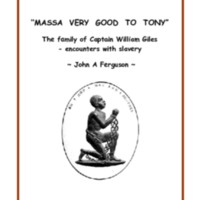
“Massa Very Good to Tony” The family of Captain William Giles - encounters with slavery
A lecture given to the Cumbria Family History Society Annual Conference in November 2007 was produced in booklet form and deposited in the Cumbria Record Office at Carlisle. To mark the bicentenary, John A. Ferguson researched the story of a former slave from Jamaica who lived in Cumberland. Captain William Giles of the British Army served in the West Indies in the 1780s, settling with his family in Jamaica. When the family returned to England, they brought with them James Anthony, known as "Tony", their former domestic slave. Tony was later servant to several other families in Carlisle, and is buried in St Mary's churchyard.
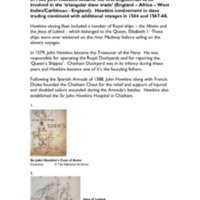
Freedom 1807: The Chatham Dockyard Story
The Historic Dockyard Chatham opened a new exhibition in 2007 to look at the history of Chatham in the context of the transatlantic slave trade. The exhibition examined dockyard ‘founder’ John Hawkins - the leader of the first English expedition to transport West African people to the Americas - the work of Chatham-built ships in policing the slave trade post-abolition, and the hidden history of people from ethnic minorities who served in the Royal Navy or worked in the naval dockyard, from the 18th century to the post-Second World War period. The exhibition also looked at Chatham's links to Indian shipbuilding. HMS Gannet (1878), preserved alongside two other historic warships at The Historic Dockyard, is the only surviving British warship to have taken part in the suppression of the slave trade off the coast Africa during the 19th century. Between 1885 and 1888 Gannet undertook anti-slavery patrols in the Red Sea, intercepting Arab slave traders operating off the East Coast of Africa, around the Gulf and the Indian Ocean.
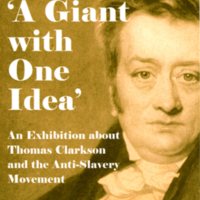
'A Giant with One Idea': An Exhibition about Thomas Clarkson and the Anti-Slavery Movement
A Giant with One Idea told the story of the anti-slavery campaign through the personal narrative of the abolitionist Thomas Clarkson, who was born and raised in Wisbech. The exhibition included an overview of the transatlantic slave trade, major campaigners in the abolition movement, the antislavery campaign after 1807, and details of Clarkson’s travelling chest, which he used to help illustrate the cruelty of the slave trade. The exhibition later travelled to other venues in the area. Accompanying the exhibition was a handling box based on Clarkson’s chest available for schools and community groups, as well as a children’s activity booklet led by the character of Clarkson himself. The museum also supported the publication of a number of books telling the life stories of Thomas Clarkson, and his less well known brother, the naval officer John Clarkson.
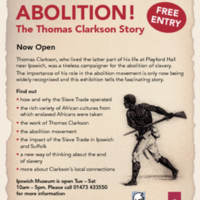
Abolition! The Thomas Clarkson Story
Colchester and Ipswich Museum Service produced an exhibition about slavery and the trade in enslaved Africans and the life of Thomas Clarkson, the abolitionist campaigner who lived the latter part of his life at Playford Hall near Ipswich. The exhibition focused in particular on the African and local history collections in the museum service. A replica mahogany travelling chest was produced as a handling box for local schools - Thomas Clarkson famously displayed a chest filled with materials from Africa and the slave trade while travelling on anti-slavery campaigns.
The exhibition was produced in collaboration with the Nia Project, and was part of a wider programme of events and outreach activities with local schools and African and Afro-Caribbean community groups. The artist Anissa-Jane worked with members of the Ipswich community to create a new art installation to accompany the exhibition.
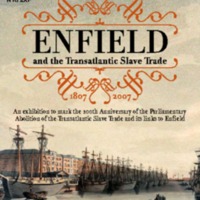
Enfield and the Transatlantic Slave Trade
An exhibition to mark the bicentenary was developed by Enfield Museum Service in partnership with the British Museum and Enfield Racial Equality Council. The exhibition looked at West African culture, the development of the local African community, the links between the transatlantic slave trade and Enfield, wealthy landowners and Quaker abolitionists who lived in the area. Free family days held during school vacations offered traditional Ghanaian story-telling, dancing and drumming, crafts and object handling. Living History Days gave visitors the opportunity to meet actors portraying William Wilberforce and Olaudah Equiano. School workshops included a drama session and performance about a runaway slave developed from material from Lambeth Archive. The museum service also produced a book, edited by Valerie Munday, which explored further the links between Enfield and the slave trade. The book was sent to all schools in the borough, and formed the basis of a teaching resource aimed at Key Stages 2 and 3. Loan boxes and handling collections provided by the museum service include Ghanaian artefacts and items relating to the slave trade. In 2011, Enfield Racial Equality Council unveiled a plaque to commemorate abolition at the Enfield Civic Centre.
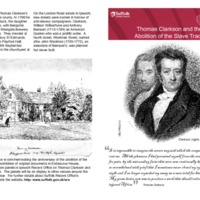
Thomas Clarkson and the Abolition of the Slave Trade
The county of Suffolk has many connections with the abolitionist Thomas Clarkson. He married in Bury St Edmunds and lived the later years of his life at Playford Hall near Ipswich. Suffolk Record Office commemorated the bicentenary with an exhibition of original documents and exhibition panels about Thomas Clarkson and his links with Suffolk at Ipswich Record Office. The exhibition later toured other venues around the county. A source list was produced to highlight sources for Black and Asian studies in the Record Office.
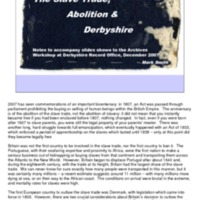
Derbyshire Slavery Project
A community project organised by SOS Immigration, a support organisation for asylum seekers and refugees based in Derby. In December 2007, Derbyshire Record Office held workshops for volunteers, designed to introduce archival and analysis skills when studying historical documents relating to slavery. The project’s aims were to co-ordinate research into links between Derbyshire and slavery, and to communicate the results to the public.
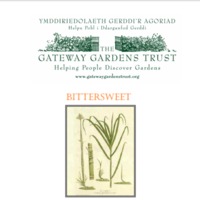
Bittersweet: Sugar, Spice, Tea and Slavery
The Bittersweet programme by the Gateway Gardens Trust involved 80 free guided garden visits over two years, around more than 30 gardens in Wales with a range of community groups, schoolchildren and lifelong learners. The themes of the visits and a mobile exhibition were the links between the slave trade and historic gardens, their makers, what they planted, Welsh abolitionists and the wider links with local communities in Wales. Historic gardens provided the starting point, looking at how everyday vegetables and fruits - beans, potatoes, tomatoes etc. - first reached the UK from the Americas. The project also looked at the history of afternoon tea, and the links between sugar, cotton and tea and slavery. The groups reflected on how many industries, grand houses and gardens were built from wealth linked to slavery, such as Cyfarthfa Ironworks in Merthyr and the expansion of the slate industry at Penrhyn Quarry. Early 18th century-style newspapers were produced, aimed at schoolchildren and adults.
Gardens involved included Cardiff’s Bute Park, Swansea’s Singleton Park, the National Botanic Garden in Carmarthen, Gwydir Castle in Llanrwst, Dyffryn Gardens, Portmeirion, Penrhyn Castle, Picton Castle, Dinefwr Park and Castle and Aberglasney Gardens.
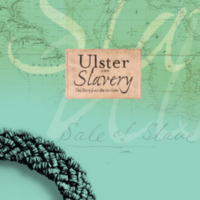
Hidden Connections: Ulster and Slavery 1807-2007
The Hidden Connections exhibition was a result of partnership between the Public Record Office of Northern Ireland (PRONI) and the Linen Hall Library in Belfast. The exhibition explored Ulster's links with slavery after 1807 via people, events and places, and looked at both the pro and anti-slavery debates in Northern Ireland. It drew on documents from PRONI’s archives, artefacts from the Ulster Museum and contemporary books and pamphlets from the Linen Hall Library and elsewhere. After its launch at Linen Hall Library, the exhibition toured Northern Ireland, travelling to Down Museum, the Harbour Museum in Derry, Lisburn City Library and the Ulster American Folk Park.
The wider Hidden Connections programme featured workshops exploring archival sources, performances and lectures by leading scholars. There was a panel discussion on ‘Slavery Now’, a walking tour of Belfast sites associated with the slavery issue, and a boat trip on the Lagan focusing on the port’s links with slave colonies. Gerry McLaughlin’s ‘Blood sugar’ is a drama documentary devoted to the literature of slavery, music and song. 'Freedom and Liberty' was the theme of the UK-wide Archives Awareness Event. PRONI organised special events and produced a catalogue, 'Ulster and Slavery', listing the references to slavery to be found in the archive.
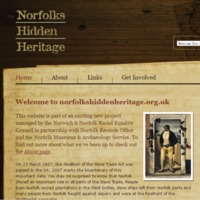
Norfolk's Hidden Heritage
Norfolk’s Hidden Heritage was a partnership project between the Norwich and Norfolk Racial Equality Council (NNREC), the Norfolk Record Office (NRO) and the Norfolk Museums and Archaeology Service (NMAS) which researched the links between Norfolk and transatlantic slavery. For example, many slaving voyages left England from King's Lynn, while the Dalling family of Norfolk owned the Donnington Castle plantation in Jamaica. The exhibition, curated by Norfolk Record Office, won an award for the Best Black History Project for the East of England from the Black History Society. The website provided an interactive timeline to trace Norfolk’s Hidden Heritage from 1670 to today. There was also a database to search for important people, places and dates. Workshops were run in a number of schools, and information packs distributed. More widely, the project worked with the University of East Anglia, Norwich City College, the Prison Service and the Youth Offending Team. As part of the project, Norwich Academy Drama Group put together the production 'Diary of a Son of Africa', about an enslaved African who eventually gained his freedom.
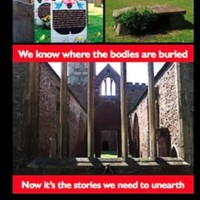
Diverse Stories
The Diverse Stories project began in 2007 with participants from Malcolm X Elders, an Afro Caribbean elders and community group in Bristol, taking part in a creative writing project to mark the bicentenary. This was jointly supported by Show of Strength Theatre Company, Our Stories Make Waves and English Heritage. Participants visited the ruined Temple Church in Bristol and explored its links with the slave trade and abolition movement. Their responses included a range of dramatic monologues covering themes such as slavery, racism, trade, childhood memories of Jamaica and migration from the Caribbean. These were read at a performance by a professional actor. In 2008 the project was given a permanent record by a selection of the stories being recorded on audio CD.
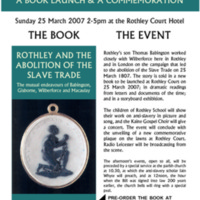
Rothley and the Abolition of the Slave Trade
A commemorative event to mark the bicentenary in Rothley, Leicestershire, was organised by a planning group of Rothley Parish Church and the Committee of the Rothley History Society. The event on 25 March 2007 launched a new book by Terry Sheppard and Iain Whyte, ‘Rothley and the Abolition of the Slave Trade’, which explored the ‘mutual endeavours’ of Thomas Babington, Thomas Gisborne, William Wilberforce and Zachary Macaulay. These men were linked though family and university connections, and their involvement in the campaign to abolish the slave trade. Many of their meetings took place at Babington’s home, Rothley Temple, now known as the Rothley Court Hotel, where the event in 2007 was held.
The day included dramatic readings from 18th century documents relating to the campaign for abolition, an exhibition of panels from Anti-Slavery International, an interview with a descendant of Thomas Babington, and a choir concert from the Kainé Gospel Choir. In collaboration with Charnwood Borough Council, a new plaque was unveiled to remember the suffering of African people and the part played in ending the trade by Babington, Wilberforce and others. In December 2007, the planning group invited organisations in Rothley and Leicester to submit items contemporary to 2007 to be placed in a time capsule, to be laid up at the court until the tricentenary in 2107. The oak casket sits behind glass in a niche at the hotel.
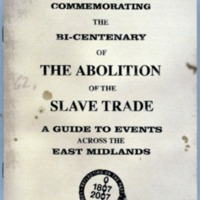
A Guide to Events Across the East Midlands
A guide to bicentenary activities and events in museums, archives and other venues across the East Midlands - Leicestershire and Rutland, Nottinghamshire, Northamptonshire, Derbyshire and Lincolnshire - was produced by Museums, Libraries and Archives East Midlands and Renaissance East Midlands. These events commemorated local connections to the abolitionist movement and to slavery. For example, Manor House Museum in Kettering produced a loans box containing material on William Knibb, a local abolitionist. Rothwell Arts and Heritage Centre produced an exhibition on the life of Rothwell-born missionary John Smith. Derby City Museums and Gallery worked with an artist and young people to explore Derby's industrial heritage and its links to the slave trade using The Silk Mill, Derby's Museum of Industry and History, as inspiration. Chesterfield Local Studies put together a touring exhibition to explore Derbyshire connections to the slave trade. A community commemorative event organised by Lincolnshire County Council and Lincolnshire African and Caribbean Support Group included a service of remembrance and the release of 200 'Freedom' balloons from Lincoln City Square on 24 March 2007.
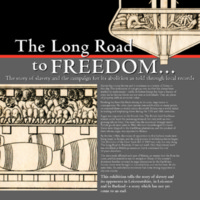
The Long Road to Freedom
As made clear by The Long Road to Freedom exhibition in 2007, the Record Office for Leicestershire, Leicester & Rutland contains a significant collection of documents which reveal local connections with the slave trade, and with those who campaigned for abolition. Several prominent local families owned slaves on plantations in the Caribbean and on the north coast of South America. Leading Leicester abolitionists, Elizabeth Heyrick and Susanna Watts, orchestrated a vigorous anti-slavery campaign in Leicester, including a boycott on sugar. Local landowner, Thomas Babington of Rothley Temple, was a friend of William Wilberforce and hosted meetings of anti-slavery campaigners at his home. The exhibition also highlighted a unique collection of mid-19th century papers which provide access to the voices of the enslaved in a slave court in Lagos, West Africa. It also told the stories of two former slaves, Rasselas Morjan and Edward Juba, who came to Leicestershire with their owners. This exhibition toured to various venues in the region, including Abbey Pumping Station, where it coincided with family activities focused on the work of Elizabeth Heyrick.
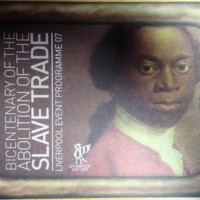
Liverpool Event Programme 07
Liverpool hosted a city-wide programme of activities and projects to commemorate the bicentenary, as part of events to mark the city's 800th birthday. The events aimed to celebrate the African Diaspora and support works by artists of African descent. They included: LEAP, an annual contemporary dance festival featuring African dance companies; a performance of Mighty Diamonds - Reggae Legends at the Philharmonic Hall; the Roscoe Lectures; the Brouhaha International Carnival, celebrating resistance, rebellion and abolition; the Africa Oyé Music Festival at Sefton Park; the Bound exhibition at Open Eye Gallery, showing works representing personal perspectives on the physical and psychological impact of slavery on humanity; and many other lectures and debates. There was also a slavery trail around the city.
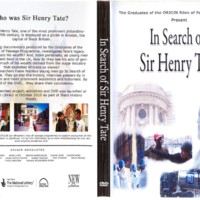
In Search of Henry Tate
A bust of Sir Henry Tate, one of the most prominent philanthropists of the 19th century, is displayed on a plinth in Brixton. A group of young men from the ORIGIN Rites of Passage Programme produced a documentary to investigate Tate's legacy and, in particular, the tensions inherent in his acts of generosity being funded by wealth derived from sugar production. The documentary featured interviews, research, and trips to Tate & Lyle plants and buildings. New Initiatives, a youth and community association, developed ORIGIN as an Africentric rites of passage programme, to support young men of African descent in their transition to adulthood. The project, exhibition and DVD was launched at Brixton Tate Library in October 2010.
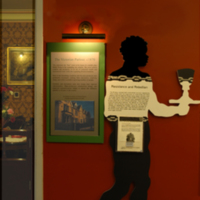
Unfair Trade
York Castle Museum's Unfair Trade exhibition used the museum's collections to explore slavery from the viewpoint of ordinary people, and how consumption of slave-produced everyday commodities - sugar, tea, coffee, cocoa - contributed to the slave trade. It also looked at the part played by York in the abolition of the slave trade and slavery, with the many Quakers of the city supporting William Wilberforce and helping to finance his election campaign. The exhibition continued the focus on consumption into modern life by asking visitors to consider where the products they buy come from. York Castle Museum features a recreated Victorian street, Kirkgate, with its own newspaper, 'The Kirkgate Examiner'. A special edition was distributed to coincide with the exhibition.
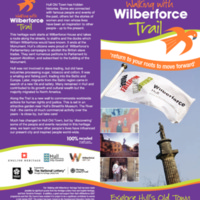
Walking with Wilberforce Heritage Trail
Part of Wilberforce 2007, the Walking with Wilberforce Heritage Trail is a journey through Hull's Old Town, via twelve important landmarks related to William Wilberforce and the theme of freedom. Along the trail is the Humanitarian Wall, at the Wilberforce Institute for the study of Slavery and Emancipation, constructed in 2006 to commemorate worldwide actions for human rights and justice. The ceramic markers, inspired by the Sankofa bird, were designed especially for the trail by three community and art groups from Hull's Africa Forum, from Hull College ceramic students and from local schools working in collaboration with two local ceramic artists. The trail was launched with a celebration of African culture led by students from Hull schools and the local Congolese community.